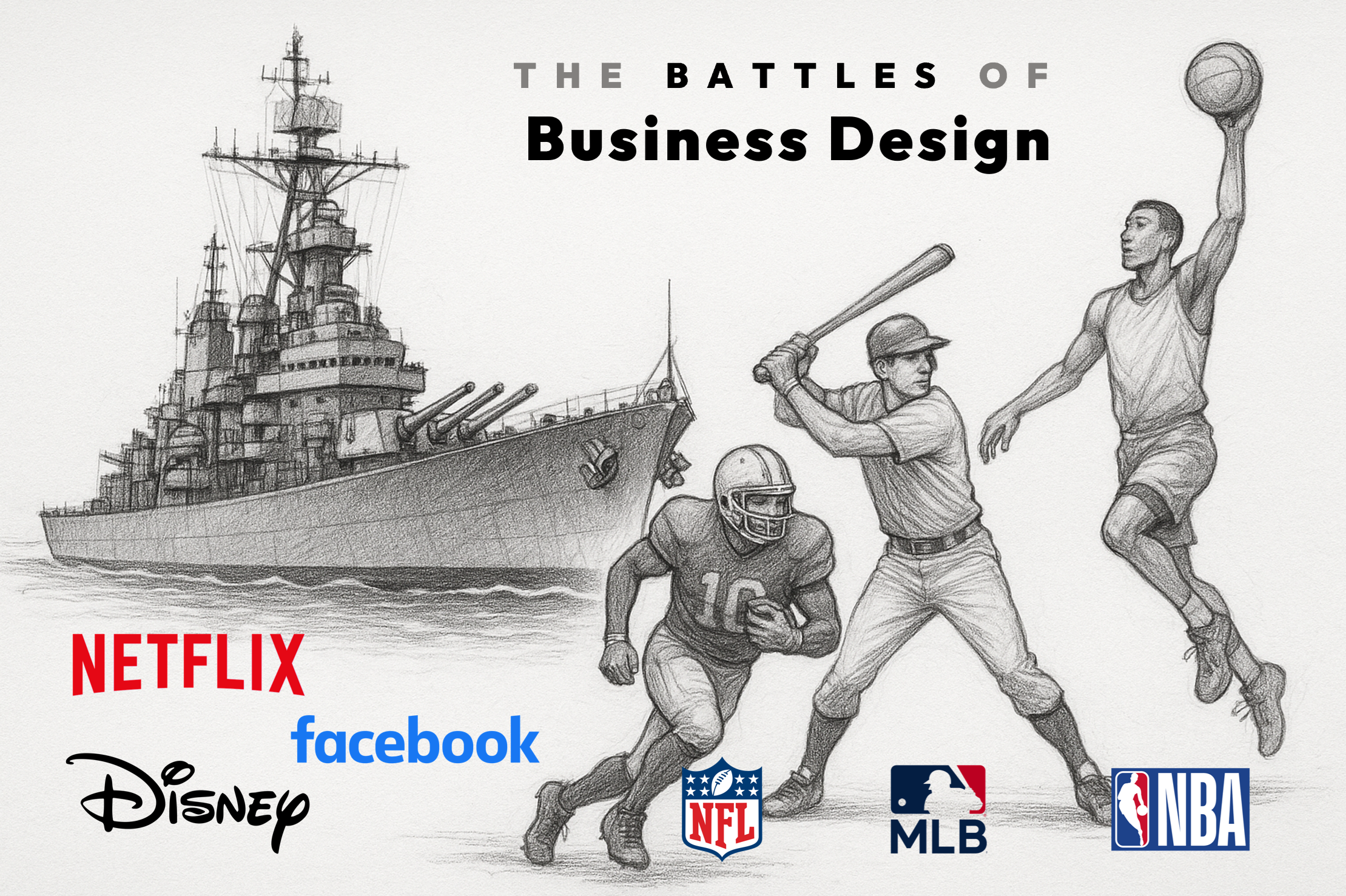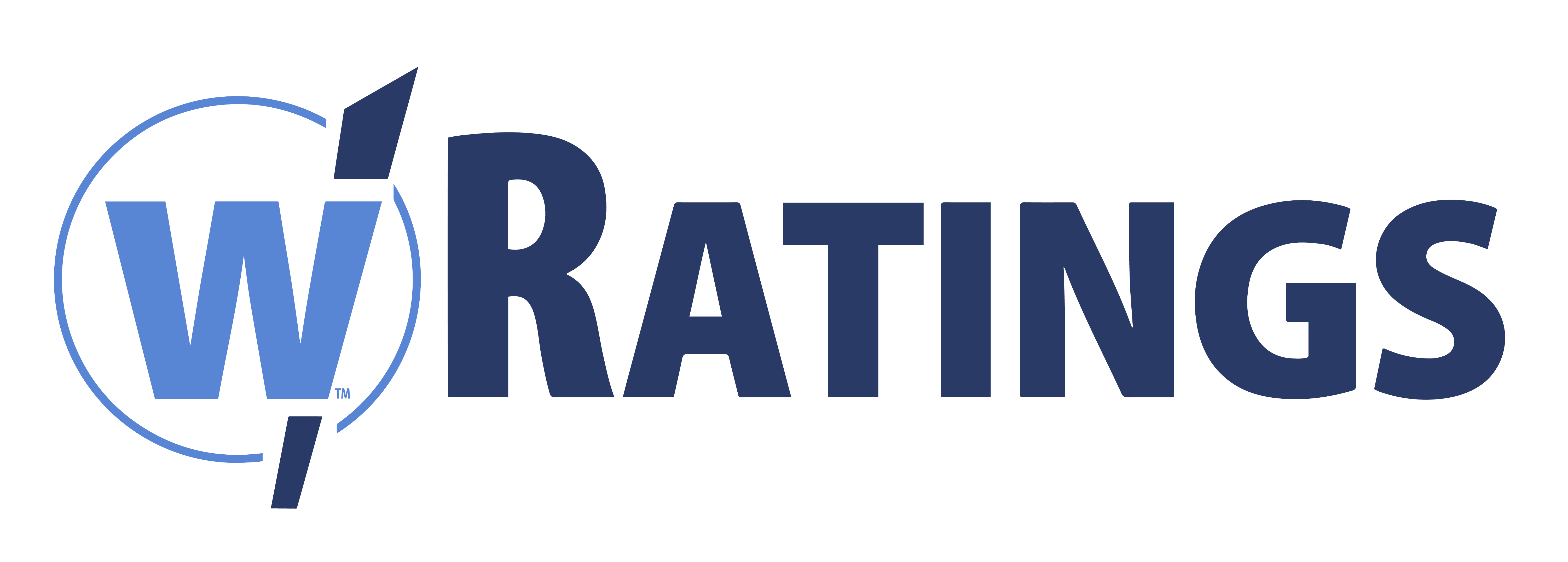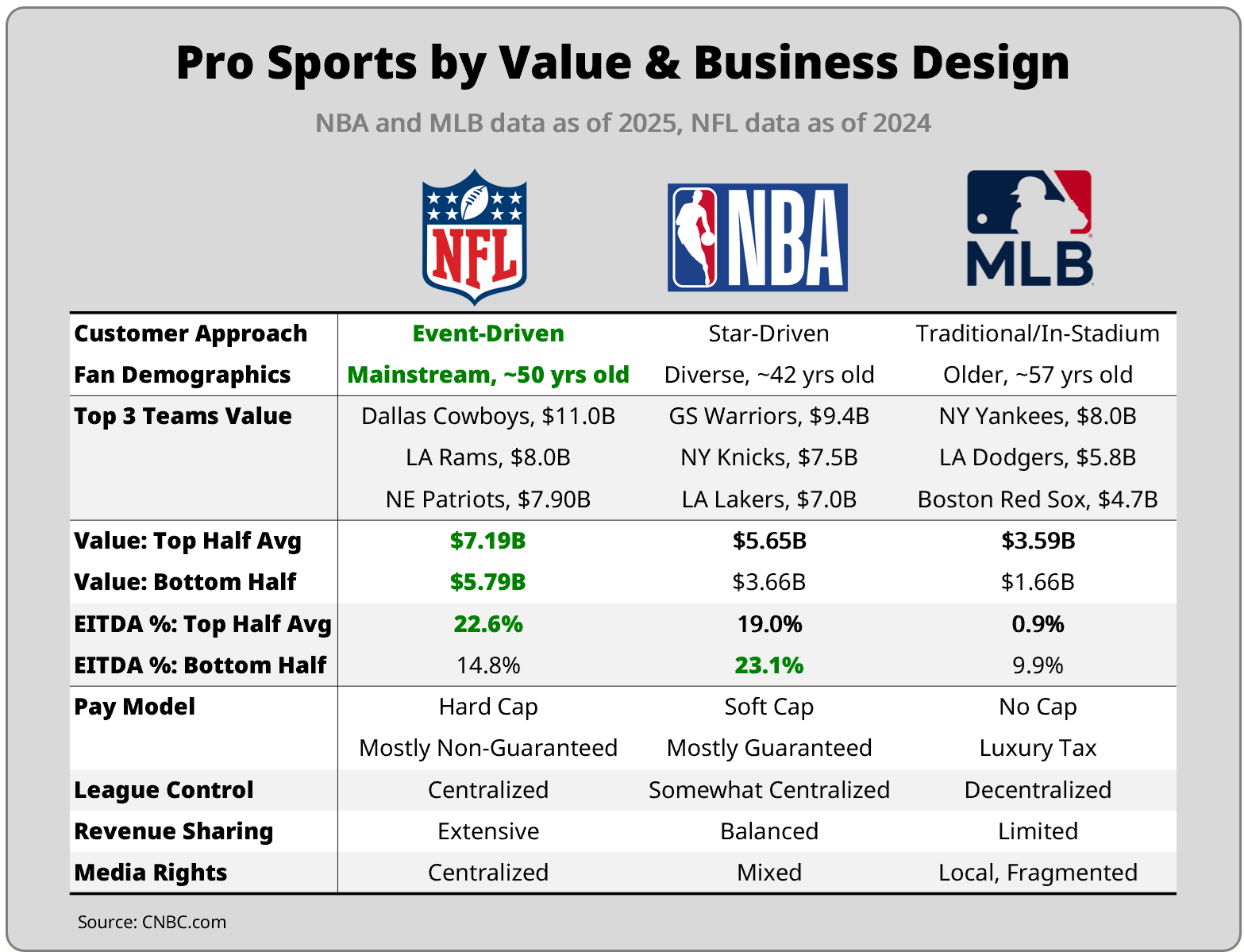Better to own an NFL, NBA, or MLB team . . . Or Netflix, Disney, or Meta?
Gary A Williams
July 14, 2025
Better to own an NFL, NBA, or MLB team . . . Or Netflix, Disney, or Meta?

All trademarks are properties of their respective owners.
Sports teams are rare assets to own and often in high demand. But for the Pohlad family that owns the Minnesota Twins, their timing is not so good.
Carl Pohlad bought the team in 1984 for $44 million. The team went up for sale last October, and nine months later may finally have a buyer after lowering their ask from $1.7 billion to $1.5 billion. Still a nice chunk of change but comparatively, not so much. The NFL Washington Commanders sold for $6B and reports say the LA Lakers are selling for $10B.
So why the delay? And why the low price tag?
Turns out that how Pro Sports commissioners run their leagues matters – a lot. Centralize or decentralize? Guarantee players salaries or not? How you pay players, share revenues, and distribute media rights makes a difference. Major League Baseball (MLB) has not been keeping up with the times in a number of areas. Fans see it. Advertisers see it. And team buyers see it.
The NFL business design gets it. How you approach all the key stakeholders in your ecosystem can be the difference between success and failure.
Just ask the CEOs at Netflix, Disney, or Meta. Each one approaches their customers with a different type of business design. If you challenge the status quo of an industry, like Netflix does, you attract more customers, keep them happier, and grow profits faster.
The NFL and Challenger companies share many of the same traits, and both are winning big today with fans/customers and investors.
Customer Approach: Event-Driven Wins
A few weeks ago, the NFL’s Brian Rolapp was announced as the first CEO of the PGA Tour. I discussed how difficult pro golfers – otherwise known as independent contractors – would be to manage versus a union of NFL players. Business design matters.
The NFL has maneuvered the new competitive landscape about as well as any professional sport could to date. Their media-first approach allows them to build “must see” TV – it’s “appointment-driven” for most fans on Sundays, and now Monday and Thursday night as well. They’ve integrated fantasy football and betting to drive deep fan engagement. Every week is meaningful, making it an event-driven model built for the mainstream. No surprise that they reportedly have the highest satisfaction among pro sports fans.
NFL Owners have a hard cap on player salaries, which are mostly non-guaranteed. Media rights are centralized and revenue sharing is equal across teams to ensure competitive parity. That all adds to the making of high stakes games every week.
The NBA takes a slightly different approach, with a soft cap and mostly guaranteed salaries for its players. Revenue sharing is balanced (high for players) and media rights are mixed. In several ways, the NBA is about half-way between the NFL and MLB.
For its fan approach, the NBA opts to be highly star-driven, with some of the most lucrative endorsement opportunities. This is attracting a much younger, diverse demographic, especially with its digital first strategy. The NBA brand is also ahead with attracting an international audience.
Now for Major League Baseball (MLB), who is clearly well behind to update its business design. Yes, they did fix the “slow game” issues with the pitching clock, but they failed to adjust in other areas. And updating those areas will likely be much more challenging.
MLB pays some of the highest salaries in all of pro sports, especially for the top stars, but large disparities in salaries exist throughout the league causing rifts between players, fans, and even owners. Media rights are highly fragmented, with ~25% of revenues relying on local TV deals. This favors teams in large, media-rich markets and leaves small market clubs constrained.
Worse yet, MLB’s traditionalist approach to value in-stadium experiences along with its inconsistent marketing and digital approach, leaves the league with an aging, older fan demographic in their late 50s. Younger fans are just not interested.
The solution for MLB is not simple, but starts with fixing media rights. After their ESPN contract ended earlier this year, negotiations have supposedly been restarted. Without proper media distribution, MLB’s future could be in even more jeopardy.
But a media deal still doesn’t solve their customer approach issue. If MLB owners want to enjoy the same valuations as NFL and NBA teams, they need to take a hard look at why fans want to watch their games. Similar to how Netflix broke the Blockbuster model, MLB needs to challenge the status quo and become an upstart in the game of professional sports.
Customer Approach: Challengers Win
Business design matters. As an executive, how you setup structure, pay, and systems is fully under your control. Product and service offerings determine the industries in which you compete. Yet one of the most underestimated aspects to business success is how you approach customers, and in turn, how customers perceive you. How you design your business is critical to financial success.
Industry leadership is well-earned over time, where customers see a company as the standard bearer. Amazon, Facebook (Meta), and Microsoft are the accepted norms. It’s an enviable position because they can force competitors to follow their lead, make mistakes and recover with little penalty, and set the expectations for the market.
The risk for Standards comes when they stop raising customer expectations and rest on the status quo to compete. Just like Major League Baseball (MLB) looks today, others will pass them by.
Companies that offer superior quality products and services are what we call Premiums. They are well-recognized for their elegant, upscale, and higher performance: Apple, Disney, John Deere, and Starbucks all compete based on quality.
The NBA today, with its star-driven approach, is similar to how Premiums approach their customers with their “star” products. Customers view their products with higher satisfaction levels, although other areas of their business may not fully meet their expectations, leaving them vulnerable to the third category of companies.

Challenger companies defy the status quo with their offerings in an industry. They look for fresh, inventive ways to deliver their offerings to customers in a streamlined, consistent way over time. When done to its peak, they make things better, faster, and economical for customers.
Just like the NFL with their appointment-viewing games, Challengers become “must haves” to their customers. The similarities don’t stop there though, as we can see in the table for the W-30 Index of companies. The W-30 Index is a selection of companies from the wRatings benchmarking database based on size, industry, brand recognition, and business design.
Challengers meet customer expectations better (measured by Value Gaps, which are expectations minus company performance on a scale of 1 to 10), are emotionally more connected (GAP in Emotions), and have higher Net Promoter Scores® than Premiums or Standards.
And financially, Challengers generate superior gross profit growth (TTM) and higher revenue growth, typically needing far fewer employees to accomplish it.
So which should you own today: An NFL, NBA, or MLB team? An NFL team. And which should you be today: A Challenger, Premium or Standard? A Challenger.
As you may have surmised, Standards and Premiums don’t need to exclusively stay in their lanes. Successful companies over the long term reinvent their approach periodically to become Challengers. Just like MLB needs to do today.
Become a “Must Have” to your Customers
Let the wRatings platform analyze your customers today. You will be able to clearly see their expectations, your company performance versus key rivals, and how much more customers are willing to pay so you can grow revenues and margins today.
Don’t wait. Apply to become a wRatings Insider today.



